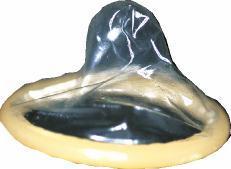
The following condom-use scenarios occurred recently.
I was asked, while overseas, by a middle-aged couple to show their 13-year-old son how to use a condom.
In Jamaica, a high school invited me to speak to 11th graders about HIV/AIDS. During my presentation to 120 students, a male student asked me to show the group how to use a condom. The teacher interjected and said that I was not allowed do that. The young man stood up and angrily stated that he was sexually active and he wanted to know.
A client with HIV/AIDS called me to ask about safe sex practices which he could employ with his HIV-negative partner.
Tips on condom use
Carefully open the condom package without using teeth and fingernails (these might tear the condom).
After use, wrap the condom in paper and dispose of it in a bin.
The female condom
The female condom conducts heat and warms quickly to the temperature of the vagina. It is offered in a seven-inch size and is made of lightweight plastic (polyurethane) with two flexible rings, one at the closed end of the condom and the other at the open end. It's good to practise inserting it a few times before actually using it. You may insert the female condom up to eight hours before sex.
Use a new female condom for each act of intercourse.
Find the position for putting in the condom which best suits you.
Use of vaginal lubricant is optional.
Keep the index finger on the inner ring to insert condom into the vagina.
Place the squeezed ring into the vagina as far as you can.
Place your index and middle fingers inside the open end of the condom and push the inner ring as far as it will go. This inner ring keeps the condom in place during sex, as it fits behind the pubic bone.
Ensure that the condom lies straight and not twisted inside the vagina, and ensure that the outer ring of the condom is left hanging outside of the body.
Use your hand to guide the partner's penis into the condom while holding the outer ring in place, outside the body. Ensure that the penis is in the pouch and not alongside the condom, in contact with the vaginal wall.
After sex, remove the condom by squeezing and twisting the outer ring to keep semen inside.
The male condom

It is estimated that two to five per cent of male condoms tear during use, mainly because they are used improperly and not because they are flawed. Most male condoms are made from latex and some of the others are plastic (polyurethane, which is ideal for men who are allergic to latex).
Ensure that the penis is erect. Apply the condom immediately, since pre-coital fluid might be discharged from the penis.
If using a lubricant be aware that oil-based lubricants actually dissolve latex, use a water-based lubricant. Plastic condoms may be used with either oil-based or water-based lubricants.
If you are not circumcised pull the foreskin back and place the rolled-up condom with the rolled portion out, on the head of the penis.
Squeeze the tip of the condom (to remove air which might cause the condom to break) while you unroll the condom down the entire length of the penis.
After ejaculation hold the condom firmly at its rim to prevent it from slipping off.
Prevention is better, especially when there is no cure!
Dahlia McDaniel is a pharmacist and final year doctoral candidate in public health at the University of London; email: yourhealth@gleanerjm.com.
Monday, December 1 is World AIDS Day. The HIV is still alive and kicking.

